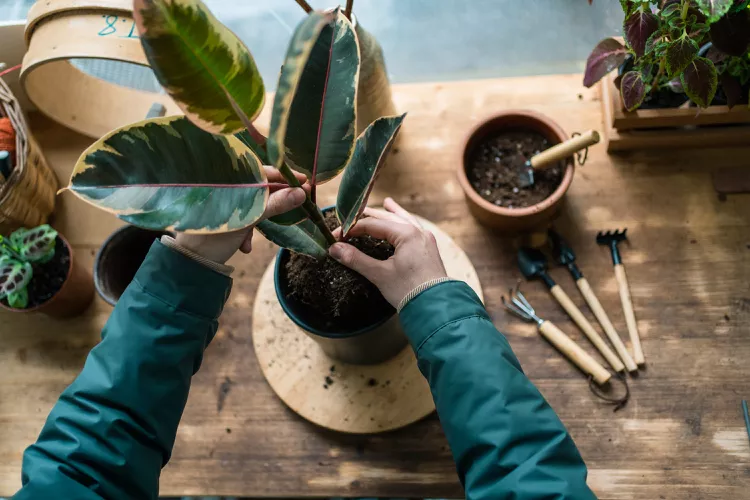Caring for plants can be a rewarding experience, but it often comes with its own set of challenges. Whether you’re a seasoned gardener or a novice plant parent, you’ve likely faced moments when your plants start to look less than healthy. “Reviving Your Plants” requires not only dedication but also a keen understanding of the common problems that affect plant health.

In this guide, we’ll explore practical tips for troubleshooting common plant issues. From drooping leaves to yellowing foliage, understanding these problems can help you breathe new life into your green companions. With the right knowledge, “Reviving Your Plants” becomes a straightforward and enjoyable process.
Diagnosing the Problem
Identifying Signs of Plant Distress
The first step in “Reviving Your Plants” is recognizing the signs of distress. Yellowing leaves often indicate overwatering, while crispy, brown edges may suggest underwatering or excessive sunlight. Wilting can occur for various reasons, including poor soil drainage or root rot.
Taking a close look at your plant’s leaves, stems, and soil can provide valuable clues. Use these observations to pinpoint what might be causing the issue. “Reviving Your Plants” begins with understanding the problem.
Common Causes of Plant Problems
Many factors can lead to unhealthy plants. Overwatering and underwatering are among the most frequent culprits. Insufficient light, pests, and nutrient deficiencies are also common. If you notice slow growth or discoloration, it could be time to evaluate your care routine.
By keeping track of watering schedules, sunlight exposure, and fertilizer use, you can address the root causes of plant stress. This methodical approach is essential for “Reviving Your Plants.”
Adjusting Watering Practices
Knowing When to Water
Watering is a critical aspect of “Reviving Your Plants.” Overwatering suffocates roots, while underwatering leaves plants dehydrated. The key is to understand your plant’s specific needs. For example, succulents thrive on less water, while tropical plants prefer consistently moist soil.
Check the soil moisture by sticking your finger about an inch into the soil. If it feels dry, it’s time to water. Adjusting your watering routine based on these observations can make “Reviving Your Plants” more effective.
Proper Watering Techniques
When watering, ensure that the water reaches the roots. Pour water evenly around the base of the plant and avoid soaking the leaves. For potted plants, ensure proper drainage to prevent root rot.
Using a consistent watering schedule can help plants recover faster. Regular attention to this detail is a key step in “Reviving Your Plants.”
Addressing Lighting Issues
Providing Adequate Sunlight
Light is essential for plant photosynthesis. Without sufficient light, plants may become leggy and weak. “Reviving Your Plants” often involves moving them to a brighter location.
Observe your plant’s natural environment. If it’s a low-light plant, ensure it’s not exposed to direct sunlight. For high-light plants, position them near a window with ample natural light. Proper lighting adjustments are crucial for “Reviving Your Plants.”
Using Artificial Light
If natural light is limited, consider using grow lights. These lights mimic sunlight and can be tailored to your plant’s needs. Position the lights appropriately to avoid overheating the plant.
Grow lights are especially useful during winter months when daylight is shorter. Incorporating them into your care routine can greatly assist in “Reviving Your Plants.”
Improving Soil Health
Choosing the Right Soil
Soil quality plays a vital role in “Reviving Your Plants.” Poor soil drainage can lead to waterlogged roots, while compacted soil may restrict root growth. Select soil that matches your plant’s requirements, such as well-draining soil for succulents or nutrient-rich soil for flowering plants.
Repotting your plant with fresh soil can also revitalize its growth. Fresh soil replenishes nutrients and improves overall health, making “Reviving Your Plants” more manageable.
Adding Fertilizer
Fertilizers provide essential nutrients that may be missing in the soil. Choose a balanced fertilizer and follow the recommended application instructions. Over-fertilizing can harm plants, so moderation is key.
Regular feeding during the growing season can boost plant vitality. This step ensures that “Reviving Your Plants” leads to sustained recovery and growth.
Managing Pests and Diseases
Identifying Common Pests
Pests such as aphids, spider mites, and scale insects can weaken plants. Inspect your plant regularly for signs of infestation, including sticky residue, holes in leaves, or visible insects.
Treat infestations with natural remedies like neem oil or insecticidal soap. Effective pest management is an essential part of “Reviving Your Plants.”
Preventing Plant Diseases
Diseases such as powdery mildew or root rot can also affect plant health. Ensure proper airflow around your plants and avoid overwatering to prevent these issues.
By maintaining a clean and healthy environment, you can reduce the risk of diseases. Preventative care is key to “Reviving Your Plants.”
Long-Term Plant Care Strategies
Monitoring Plant Health
Once your plant begins to recover, continue to monitor its health. Regularly check for signs of stress and adjust your care routine as needed. Consistency is essential in “Reviving Your Plants.”
Taking note of what works and what doesn’t can help you become a more attentive plant parent. Learning from past experiences will improve your ability to nurture healthy plants in the future.
Building a Resilient Routine
Developing a routine that incorporates proper watering, lighting, and feeding practices ensures long-term plant health. A resilient care routine is the foundation for “Reviving Your Plants.”
Celebrate small victories as your plants bounce back to life. With patience and effort, “Reviving Your Plants” becomes a fulfilling journey.
Conclusion, “Reviving Your Plants” is a process that requires observation, patience, and adaptability. By understanding common plant issues and addressing them systematically, you can bring your plants back to life. Remember that every plant has unique needs, and your care routine should reflect that. With consistent effort and attention, “Reviving Your Plants” can lead to a thriving and vibrant indoor garden. Embrace the joy of nurturing your plants and watch them flourish under your care.



